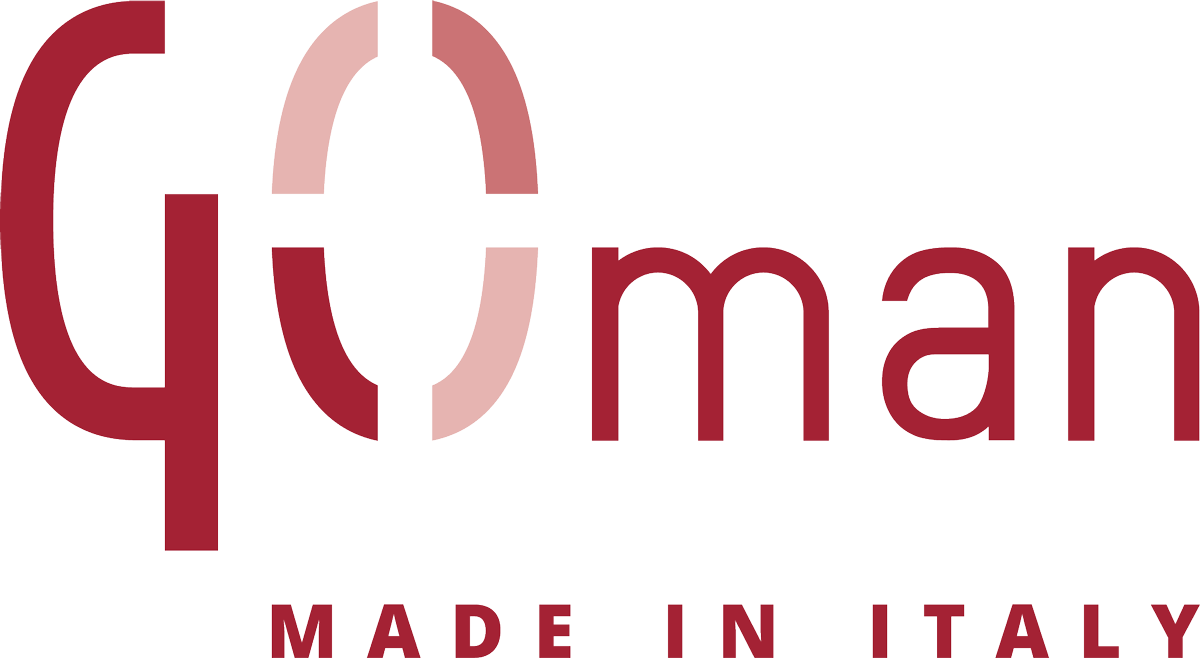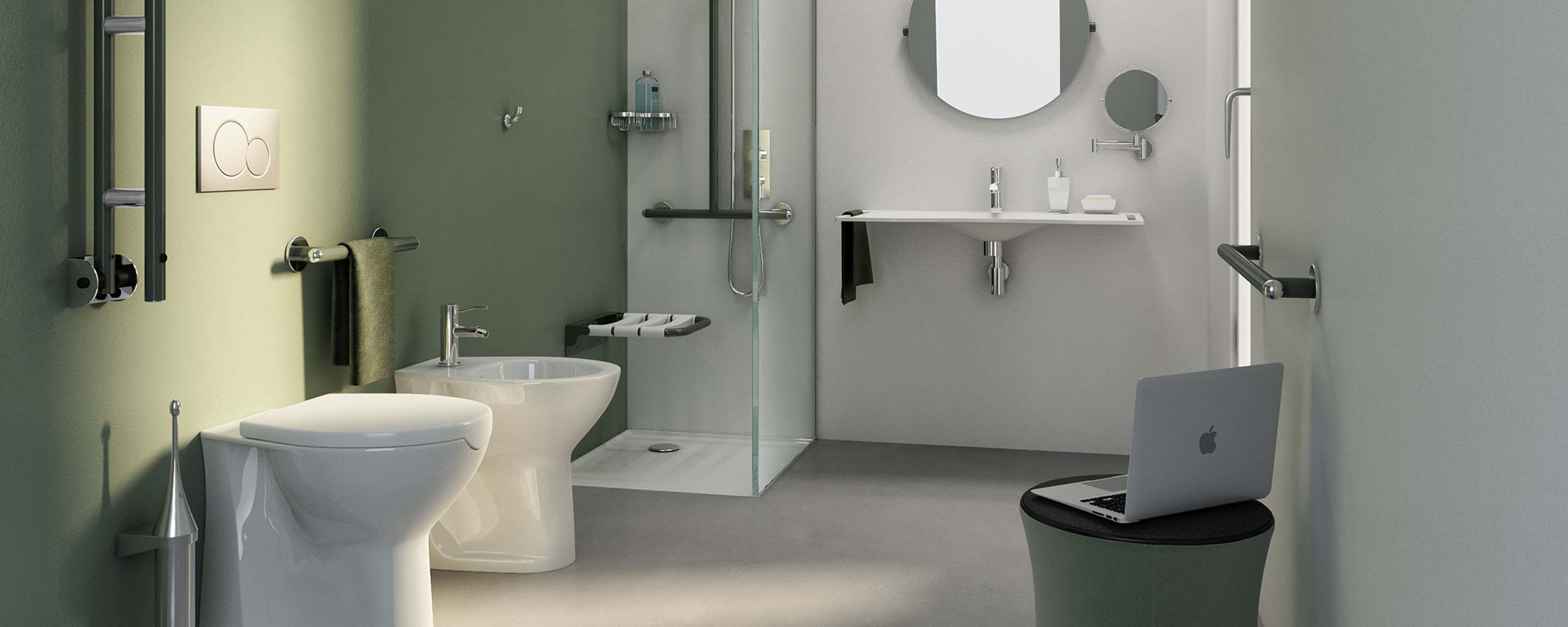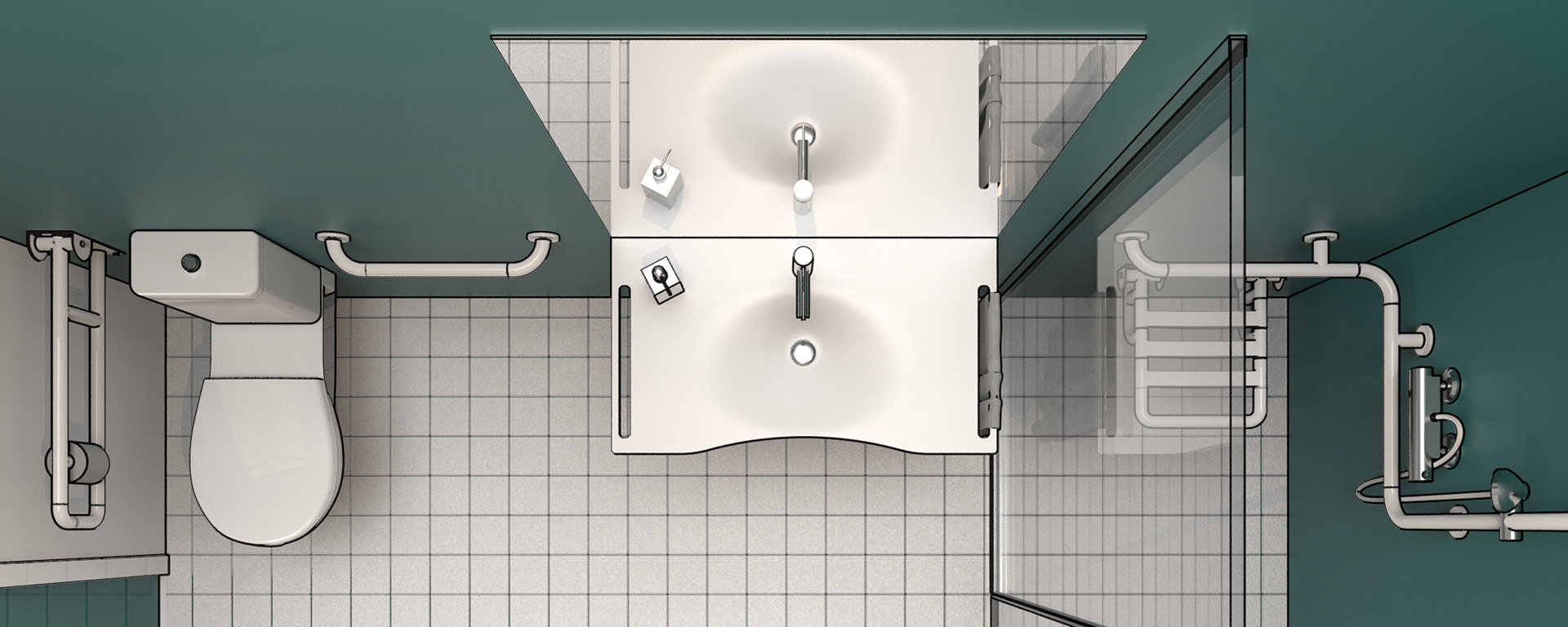What do we actually mean with the formula “design for all”?

In the last few years, the subject of the accessible project, not only regarding public and private buildings and spaces, but also products and services, has been summarized with the new formula “Design for All”, which is sometimes also called “Inclusive Design” or “Universal Design”, mainly referred to institutions or businesses that can imagine projects which may be benefitted by the greatest number of people, regardless of age or motor skills.
Goman is amongst the companies that have focused its production on these design principles; for over a decade it has introduced in the market bathroom-fittings products, designed and manufactured to enable the construction of a design and safe bathroom for all users, including elderly people and those who have motor difficulties.
Beyond ethical principles, what is necessary in practice to design and implement a product that respects the rules of the formula “Design for All” ? And what are the future evolution prospects?
In order to receive a truly technical answer we addressed these questions to Francesco Rodighiero, former-professor at the Polytechnic in Milan regarding the course of “Design for the accessibility”. For several years he has been working in Goman as a product’s designer specialized in the products which are realized following this project approach, including the multi-award winning washbasins “Flight” and “Prime”; he is also a member of the Governing Council of the “Design for All Association”.

1. What do you mean with the formula “Design for All”?
The 2004 Stockholm Declaration leaves no room for misunderstanding and defines the formula “Design for All” as the “ [..] design for the human diversity, social inclusion and equality [..]”. At a more personal level, I apply the principles of this formula so that people with disabilities may have the same care as using products of the classic design world.
2. How do you design a product by following the principles of the formula “Design for All” ?
Projects have always born from observation, research and mainly from customers’ purchasing requests. Design for All helps me to pay attention to the extended users: traditional designers often plan by abstraction, considering the standard human being. In fact, the standard man does not exist, but it is rather a complex system of different abilities, sometimes disabilities, and above all desires, ambitions.

3. Do you cooperate with other professionals ?
In the Rodighiero’s office I am lucky to have the presence of my father, who is an engineer and supports me with some technical solutions: products for people with disabilities in general have to respect the load capacity, stress and strain of several hundred pounds. On the other hand, my brother is an architect and he helps me to consider and contextualize the products within refined and contemporary environments. I consider myself a lucky person.
4. How has the design “without architectural barriers” evolved over the years ?
Surely in the last twenty years we pay much more attention to architectural barriers, even if they solve only a portion of this “problem”. Making a museum accessible does not mean making all the exhibition available to all users. We just need to think of blind people.. In this sense it is better to have an inclusive approach, as with the formula “DfA”, and to make the demolition of architectural barriers a subset included in the design process.
5. Are you satisfied with the development of the design ?
Yes, if only I saw that also great designers and architects design in an inclusive way…
6. What are, in your opinion, the aspects that deserve more attention in the future ?
The aging of the population and its longevity are factors that we cannot ignore. Today’s elderly people are people who do not want to feel old, they are connected to the network and are technologically educated thanks to the mobile devices. In this context, people’s dignity will be more and more important. We can no longer allow us to design aids with a “hospital taste”, and, more in general, we cannot trade products that are difficult to understand and use.

7. How do you judge Goman’s vision about the forumla “Design for All” ? Are you working on new projects ?
It is extremely noble. Companies that risk proposing innovative and inclusive products are rare, especially because in this sector they may result as impetuous and unusual. It takes courage and determination. From the satisfactory sales’ results of the product “Prime” and the selection for the award “Compasso d’Oro ADI”, we are taking the opportunity to develop, together with the R&D department, a new project that treasures the latest achievement.




